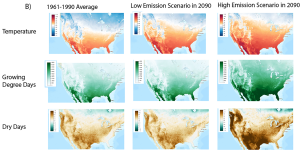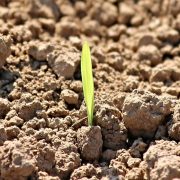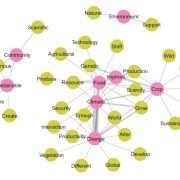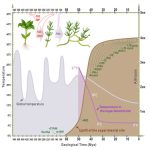The impact of climate change on endangered plants and lichen
 As global CO2 emissions continue to rise, wildlife faces new challenges due to climate change. The biotic and environmental factors impacted by the rising temperature and sea level pose unprecedented threat to the plants and lichens listed on the Endangered Species Act (ESA). In this paper, the tolerance of plants to climate change was reevaluated on 771 ESA-listed plants by a trait-based assessment, providing updated information about the urgency of taking action for the recovery of threatened species. The authors used nine sensitivity factors, Temperature, Hydrology, Disturbance, Isolation, Injurious species, Chemistry, Phenology, Obligate relationships, and Humidity to quantify the sensitivity of endangered plants to climate change. The most prevalent sensitivity factors across all regions are disturbance and injurious species, especially for species that lack mobility. All of the assessed species are sensitive to at least one factor, and the sensitivity varies across the eight US Fish and Wildlife Service (FWS) regions. Among these species, 89% of plants are found to be threatened by climate change, but only 3.6% have direct actions in place to counteract the impacts. Some conservation actions, including long-term monitoring on targeted species and seed banking to save reproduction materials have been initiated to combat climate change threats. As the climatic conditions persistently evolve, the promotion and expansion of such actions become more and more crucial for species recovery. (Summary by Diwen Wang @Diwen_w) PLOS Climate 10.1371/journal.pclm.0000225
As global CO2 emissions continue to rise, wildlife faces new challenges due to climate change. The biotic and environmental factors impacted by the rising temperature and sea level pose unprecedented threat to the plants and lichens listed on the Endangered Species Act (ESA). In this paper, the tolerance of plants to climate change was reevaluated on 771 ESA-listed plants by a trait-based assessment, providing updated information about the urgency of taking action for the recovery of threatened species. The authors used nine sensitivity factors, Temperature, Hydrology, Disturbance, Isolation, Injurious species, Chemistry, Phenology, Obligate relationships, and Humidity to quantify the sensitivity of endangered plants to climate change. The most prevalent sensitivity factors across all regions are disturbance and injurious species, especially for species that lack mobility. All of the assessed species are sensitive to at least one factor, and the sensitivity varies across the eight US Fish and Wildlife Service (FWS) regions. Among these species, 89% of plants are found to be threatened by climate change, but only 3.6% have direct actions in place to counteract the impacts. Some conservation actions, including long-term monitoring on targeted species and seed banking to save reproduction materials have been initiated to combat climate change threats. As the climatic conditions persistently evolve, the promotion and expansion of such actions become more and more crucial for species recovery. (Summary by Diwen Wang @Diwen_w) PLOS Climate 10.1371/journal.pclm.0000225









